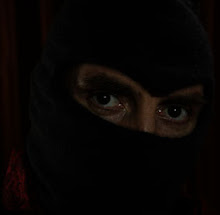http://www.artsouthafrica.com/?article=433
When David Goldblatt published In Boksburg in 1982, no one knew what the hell he was doing. In the face of rampant apartheid he withdrew to a quiet suburb and made black and white photographs, which declaimed very little. The straightness of the Boksburg arrow, in retrospect, is dangerously clear. Therefore it is with trepidation that I pick some holes in his latest show whose inevitable programme is also to let loose some predictive arrows into South Africa's middle distance.
The show is split into four sections, circulating clockwise from the entrance of the gallery, and titled Municipal Officials, In the time of Aids, Landscapes and Memorials. Because this review is too brief to evaluate four disparate sections, I have grouped the last three, which are distinct from the first.
To the left of Elize Klaaste, a municipal official in Loeriesfontein with a tidying disability, is a dilapidated bar heater. On the heater, in spider koki, is scribbled the warning, "Gevaar Buite Werking". On Elize's left, mounted on the wall behind her shoulder-pad, is a framed tourist advertisement featuring two non-descript scenes each containing a mesa. The caption reads: "The Northwest, come and see for yourself".
The clarity of Goldblatt's vision is more apparent in Municipal Officials than in the rest of the gallery, his argument more sustained. He has photographed municipal officials in situ. It is astonishing to see the ease with which technical mastery, the addressing of taboo areas of transitional dysfunction (in a nuanced and unbiased way), and the trials of trying to keep an office tidy collapse into each other.
Klaaste's faulty heater and the atypical tourist photographs hint at two problems the exhibition addresses: the failure of systems and how difficult it is to photograph the semi-desert successfully. All the work is sewn together by a foreboding sense of impending or existent failure, but in order to posit an argument which is based predominantly on photographs whose meaning is designed not to be ostensible, there needs to be a strictness of vision and the cumulative force of quantity. These only exist in Municipal Officials, which is both humorous and careful.
The ensuing three sections are comprised mainly of landscapes, all of them indexed by traces of man. They are barren and filled with apocalyptic ennui. In the time of Aids depicts landscapes, each containing an Aids ribbon of sorts. There are very few people in these landscapes; it is as if everyone has died. Memorials are pictures of small, roadside memorials, and Landscapes is chiefly a mix of photos made at intersections of longitude and latitude and semi-desert vistas, sometimes containing person or two.
In these three sections, with a few notable exceptions (such as In commemoration of and protest against farm murders, Rietvlei on the N1, near Polokwane, Limpopo. 19 June 2004), Goldblatt has often photographed ideas rather than pictures, finding scenes that are illustrative rather than sublime. The gritty printing technique, a slightly raised perspective and the fact that just about everything has been photographed at high sun lend to some very ordinary scenes a photographic value that is not innate to them. While this might be the point I miss, I think it is those scenes bolstered, not saved, by technique that succeed best.
Being au fait with Goldblatt's work means that I can place this show on a telling trajectory between its antecedents, and where he might be headed. For those who don't know his work it might, however, seem like an unresolved project. It is a pity that the accompanying texts do little to explain the work into a context because it needs a thorough, binding preface.
David William Southwood is a photographer based between Cape Town and Berlin
Wednesday, October 13, 2010
Subscribe to:
Post Comments (Atom)

No comments:
Post a Comment